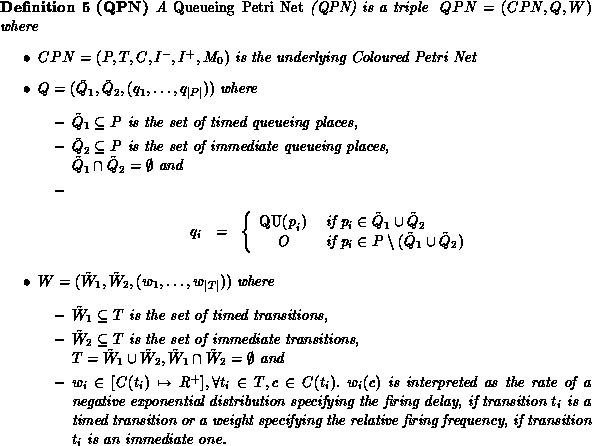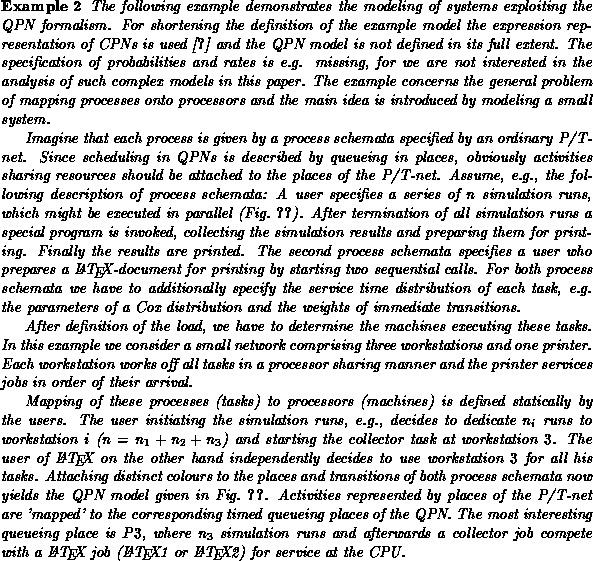In QPNs timing aspects are added to the places of a (Coloured) GSPN by integrating queues into places. Such a timed queueing place consists of two components, the queue and a depository for tokens having completed their service at this queue. The behavior of the net is as follows. Tokens, when fired onto a timed queueing place by any of its input transitions, are inserted into the queue according to the queue's scheduling strategy (specified by its AC-function). Tokens in a queue are not available for the QPN transitions. After completion of its service, a token is immediately moved to the depository. Tokens on this 'place' are available for all output transitions of the timed queueing place. Furthermore pure scheduling aspects can be described by immediate queueing places. In contrast to timed queueing places tokens on those places can be viewed as being 'served' immediately. Scheduling in such places has priority over scheduling/service in timed queueing places and firing of timed transitions. An enabled timed transition will fire after a certain exponentially distributed delay according to a race policy. Enabled immediate transitions will fire according to relative firing frequencies. The firings of immediate transitions have priority over those of timed transitions.

The graphical representation of transitions and ordinary places is similar to that of GSPNs, a pictorial shorthand representation of a queueing place is given in the right part of Fig. 3. A formal definition of the dynamical behavior of QPNs will be given in Sect. 5. Note that GSPNs without inhibitor arcs and priority functions [2] are a subset of QPNs.
